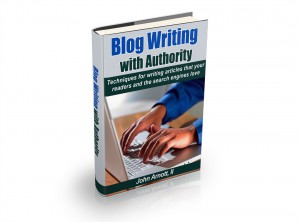Getting ready to publish your next blog topic? Follow our checklist to make sure you’re not missing anything!
Relevant Title Fewer than 55 Characters
Arguably, one of the most important elements of a blog post is the title. When search engines index a webpage, they normally include the title as the main heading. Therefore, bloggers should create unique, relevant titles for each new post. It’s also important to note that Google only displays the first 55 characters of a webpage’s title, so keep your titles under this amount to ensure a high level of visibility.
Include Images
Why should you include images in your blog posts? According to a study conducted by Skyword, webpages that contain at least one relevant image will receive 94% more views than webpages without images. Internet users respond with a greater level of engagement when presented with visual stimuli. As a blogger, you can use this to your advantage by including images in your posts. The next time you begin working on a new post, browse through the Flickr Creative Commons section to find a relevant image. Flickr has tens of millions of images that can be used for personal or commercial purposes, assuming you credit the original author appropriately.
Ease of Sharing
Can visitors easily share your blog posts with their friends or family members? Turning a blind eye to social media is a recipe for disaster when blogging. Ideally, your blog should include social sharing buttons near the posts’ content, allowing visitors to share it with the click of a button. I know what you’re probably thinking: can’t visitors share my content by logging into their social network profiles? They can, but including social sharing buttons on your blog will make it easier and more convenient for visitor to share it; thus, increasing traffic to your blog.
Break Up Your Text
I always cringe when I visit a webpage or blog post that contains nothing more than a wall of text. Even if the information is spot-on, few people will take the time to read it because of the way in which it is structured. Rather than writing a wall of text, break up your blog posts into small, easy-to-digest sections using headings, sub-headings, bullet lists, numbered lists, etc. Doing so will make your content easier to read, which in turn results in more views and a higher level of visitor engagement.
Include Links
Another essential element of a “quality” blog post is links. Whether internal or external (or both), try to get into the habit of including links in your blog posts. Links serve a few different purposes, some of which includes helping visitors find information that’s relevant to the post; encouraging search engines to crawl multiple pages; and lowering your blog’s bounce rate, all of which are important when blogging. Just remember to choose your links wisely, only linking out to relevant, authoritative websites that aren’t a direct competitor.
Did we leave anything out? Let us know in the comments section below!



Ensure you’re providing original, quality content.
Double check for spelling and grammar errors. I can’t stand when I’m reading a post and it’s clear the author didn’t take the time to review it.
Schedule your post to be published during peak internet traffic times. Research shows that Monday through Thursday are the best. Don’t just publish as soon as you are finished writing.